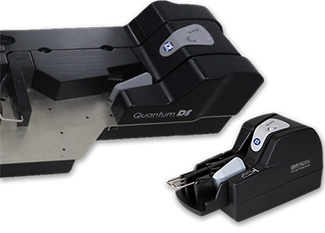
Duty cycle refers to the maximum number of items per day that should be scanned by a device in normal usage. For example, a typical check scanner at a bank teller window might have a daily duty cycle of 3,000 or 5,000 items, while a heavy-duty reader/sorter machine would have a duty cycle in the tens of thousands.
A duty cycle is not a hard limit, but a general guideline about the device’s recommended usage. For example, it would be possible to scan more than 5,000 items in a single day on a teller scanner, but doing so over the long run would likely cause the device to require increased maintenance, and to wear out sooner than expected. Different models of scanners are engineered with different specifications depending on their expected usage, and so some will have higher durability than others.
A scanner’s duty cycle should not be confused with the device lifespan, which is the total cumulative usage expected before the device needs to be replaced. These numbers are typically in the millions.
For a closer practical look at scanner duty cycles, see our case study on CMP, a Mexican payments processing company that captures more than a million documents per day.





